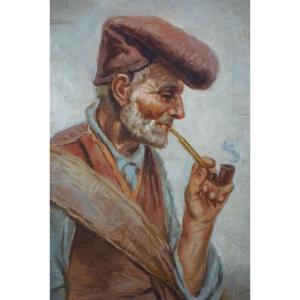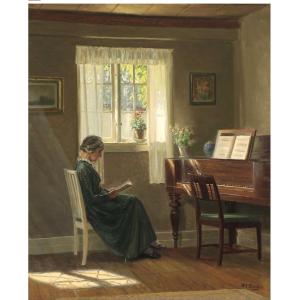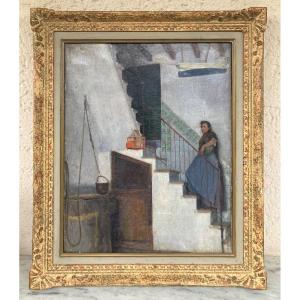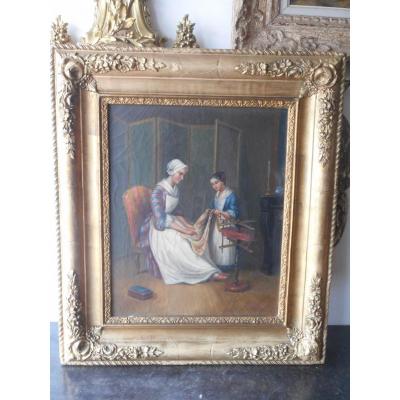50 x 42 on view
62.5 x 54 with neat frame
signed lower right and dated 1905
In this work, two young girls are placed in a warm interior, one seated peeling vegetables and the other standing, observing them. The composition is intimate and emphasizes natural elements such as leaves and plants, in harmony with the soft, subdued hues. Natural light, which appears to enter through a window, bathes the scene in soothing hues, which is typical of Osterlind's work. The play of light and shadow enhances the meditative atmosphere, while the careful details of textures and colours evoke a certain serenity. Osterlind's style is inspired by realism, but he often infuses a poetic and contemplative dimension into his depictions of rural and domestic life. Here, the viewer is invited to observe a simple and ordinary moment, made meaningful by the artist's sensitivity and attention to detail.
Allan Österlind (1855-1938) was a renowned Swedish painter and printmaker, known for his subtle use of watercolour and his works inspired by rural life and French, particularly Breton, culture. Born in Stockholm, he moved to Paris in 1878 to study art, where he was influenced by realism and symbolism, two major movements of the time. His style is characterised by soft colours and a particular attention to the play of light, as well as a naturalistic approach to the depiction of everyday life. ALLAN OSTERLIND is particularly known for his works depicting landscapes and village scenes. Close to Scandinavian painters such as Ernst Josephson, he was also influenced by Brittany, where he spent much time, painting scenes of fishermen and traditional Breton life. He also explored printmaking, producing etchings and aquatints, and was actively involved in exhibitions, notably at the Salon des artistes français and the Société nationale des beaux-arts. His marriage to a French woman and his life in France strengthened his attachment to the country, where he remained until his death. His career was marked by travels to Spain, where he drew on scenes of Andalusian life, but also by the recognition of his peers in France, being named a knight of the Legion of Honour in 1894. His works demonstrate his talent for capturing the essence of everyday life, often through a poetic and intimate prism.






























 Le Magazine de PROANTIC
Le Magazine de PROANTIC TRÉSORS Magazine
TRÉSORS Magazine Rivista Artiquariato
Rivista Artiquariato
